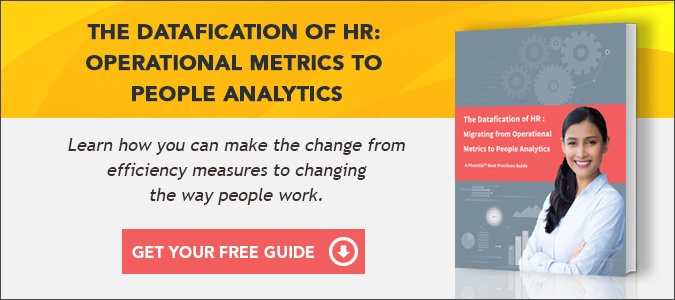
If you read industry reports about analytics, it would be easy to come away with the impression that organizations have not made much progress toward using predictive analytics to make better business decisions. The Deloitte 2016 Global Human Capital Trends report told us that the percentage of organizations using sophisticated analytics doubled, but still only eight percent of companies are able to develop effective predictive models.[1]
Human capital is not the only area where companies are struggling to make analytics work for them. In a 2016 marketing analytics report, The Economist’s Intelligence Unit said that despite substantial investment in analytics, only two percent of companies in its survey are achieving the kind of “broad positive impact” they seek from analytics.[2] Yet marketing analytics vendors abound in today’s marketplace.
In still another report, Brandon Hall Group, in their July 2016 research brief Changing Your Organization’s Mindset on Talent Management Analytics, states unequivocally that modern human capital management platforms have analytics capabilities, and “workforce analytics has outstripped its users in terms of capabilities.” [3] Their point is that the ability exists, but companies are not making use of it.
BUILDING THE BUSINESS CASE for HUMAN CAPITAL MANAGEMENT INITIATIVES
Common Threads
Analyzing all three perspectives reveals common threads that help us understand the current state of people analytics.
- Companies where analytics initiatives are successful are those where top leadership is directly involved, and the effort is aligned with business objectives.
- The complaints about data analysts and HR are the same: they don’t understand the business.
- Data silos continue to be a problem. Most organizations are yet to change their thinking from using reports to analyze the past to share data streams to predict the future.
Recommendations
We recommend a pragmatic approach. Investing in human capital management analytics without strategic direction and purpose will not improve business results – it will only reinforce the status quo.
- Work with line-of-business leaders to define a business need where the capabilities, competencies, and development of the people in the process have a direct impact on the business outcome. Identify the specific measures that represent the business result in financial terms.
- Create a cross-functional team to study the problem and assemble the data needed to assess the skills, competencies, behaviors, and attributes that differentiate top performers that impact results.
- Correlate talent management and operational data to isolate the correlations and trends that impact results.
- Based on the analysis, design and implement an intervention. Define the expected outcome in financial terms.
- Track the results over time, and report on the results.
- Use what you have learned to build the business case to expand your efforts.
Excellence in human capital analytics will not happen overnight. It will be a long journey, and your first step will be a small one. Once you show that deep analysis can improve business results, you will eventually build the alliances you need to grow your capability.
References:
1. "Global Human Capital Trends 2016 | Deloitte US | Human Capital." Deloitte United States. January 16, 2016.
2. "Broken Links: Why Analytics Investments Have Yet to Pay off." ZS Associates. June 2016. Accessed July 12, 2016.
3. "Changing Your Organization’s Mindset on Talent Management Analytics." Brandon Hall Group. July 1, 2016.


Leave a Comment